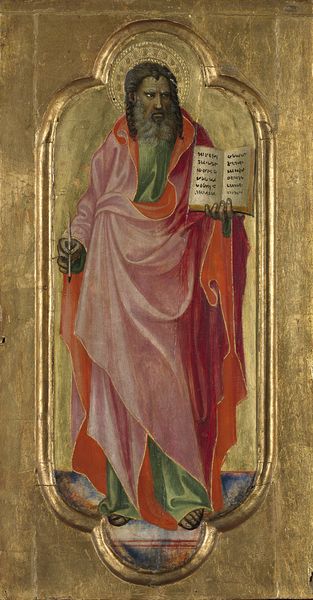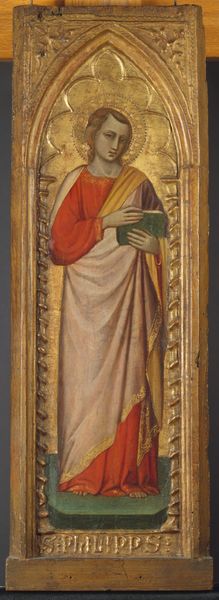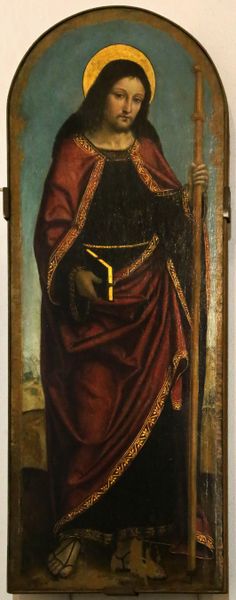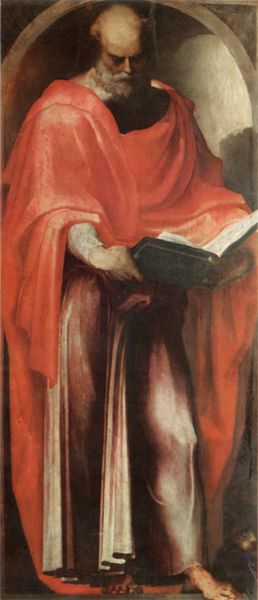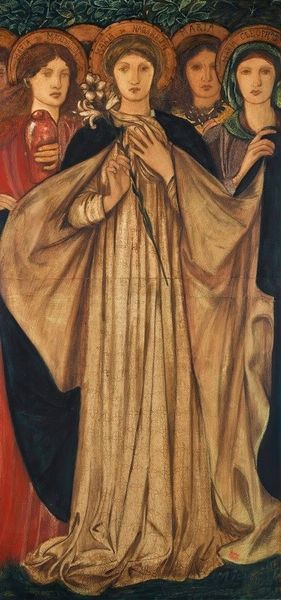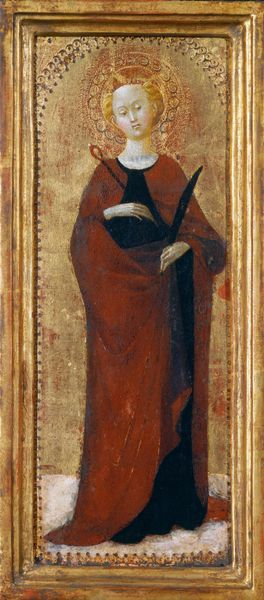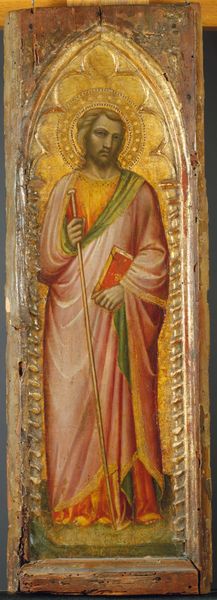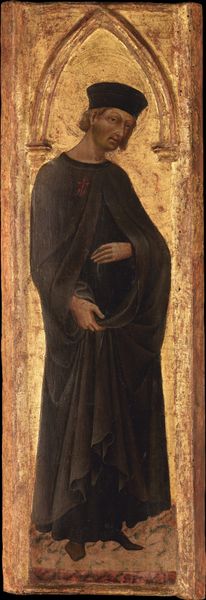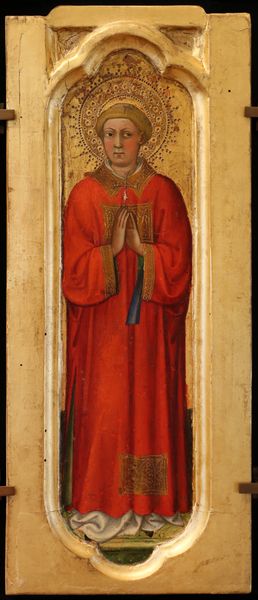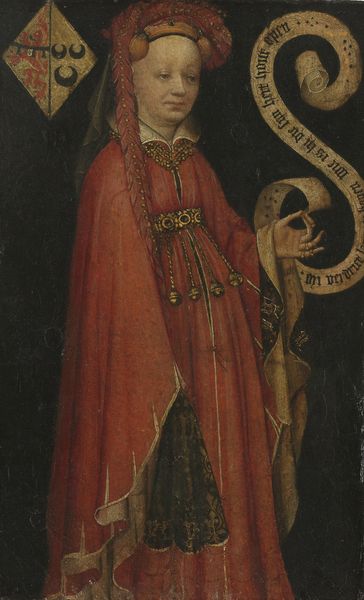
#
abstract painting
#
possibly oil pastel
#
handmade artwork painting
#
oil painting
#
acrylic on canvas
#
underpainting
#
painting painterly
#
painting art
#
watercolour illustration
#
watercolor
Copyright: Public domain
Editor: So, here we have Antoniazzo Romano's "Saint Fabian" from 1491. He seems... stern? There's a lot of gold, and that gesture feels very formal. What can you tell me about the symbolism here? Curator: The symbols in "Saint Fabian" carry a wealth of meaning, reflective of cultural memory. Notice the papal tiara, the red book, the very deliberate gesture of blessing. What feelings or ideas do those symbols evoke for you? Editor: Power, definitely, and holiness. The book suggests knowledge and teaching. But there's also a sense of distance. Is that intentional, to create reverence? Curator: Indeed. It speaks to the symbolic weight of the papacy itself. Think about how this image would function in a church setting in the late 15th century. The figure isn't just a man; he’s a vessel, an image of divine authority. How does that change your understanding? Editor: It makes me see the portrait as less about the individual Fabian and more about the *idea* of Saint Fabian, a figurehead. Does the gold leaf contribute to that sense of elevated status? Curator: Absolutely. Gold has consistently been used across cultures to represent the divine, the eternal, and the celestial. Its use here, particularly in the halo and the vestments, directly connects Saint Fabian to that tradition. Think about Byzantine icons, for example. Can you see that link? Editor: I do! It’s like he's part of this long line of holy figures, visually tied together through the symbolic language of art. I see how images create a historical and cultural bridge. Curator: Precisely. Images like these shape our collective memory. The power of symbols lies in their ability to condense complex ideas and transmit them across time. Editor: I never considered how much images rely on our cultural memory to create meaning. It is interesting.
